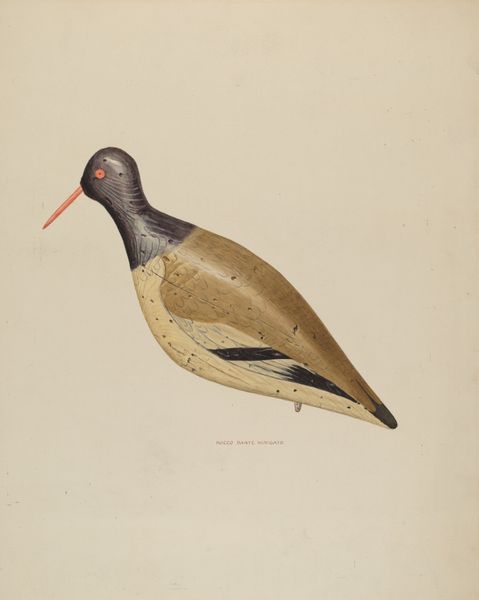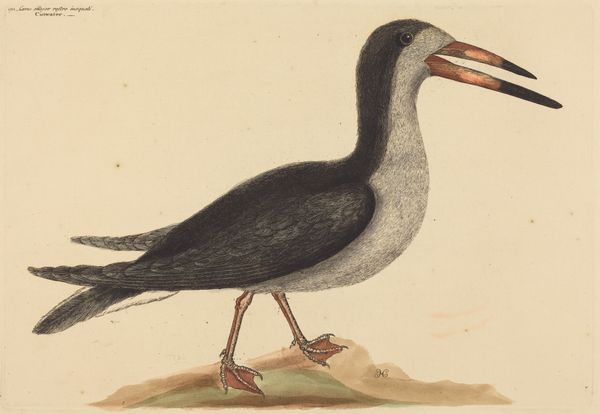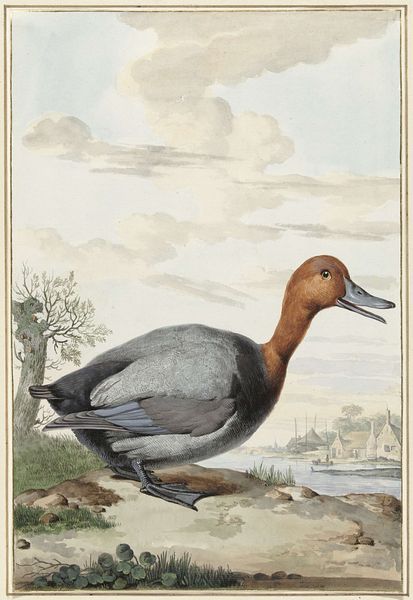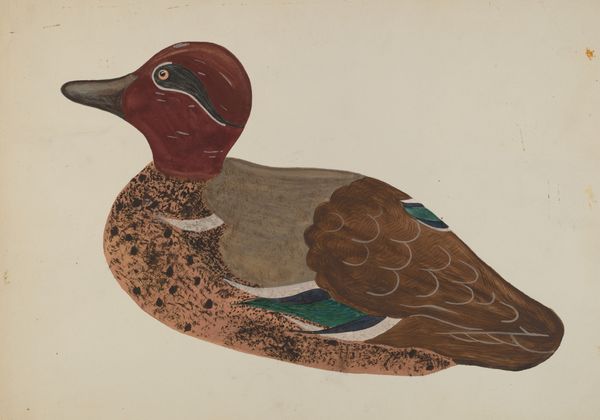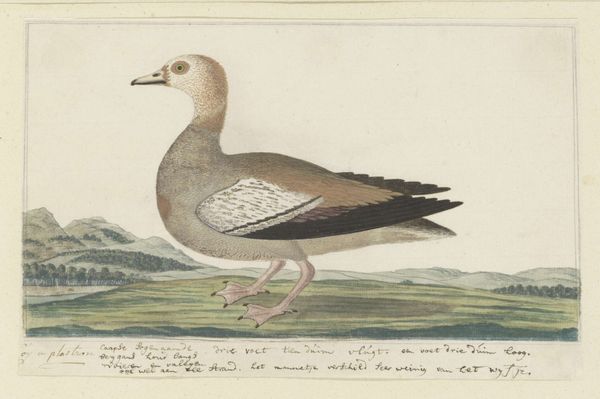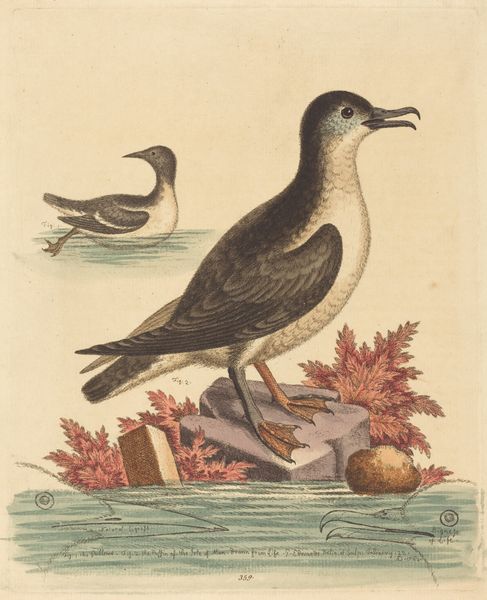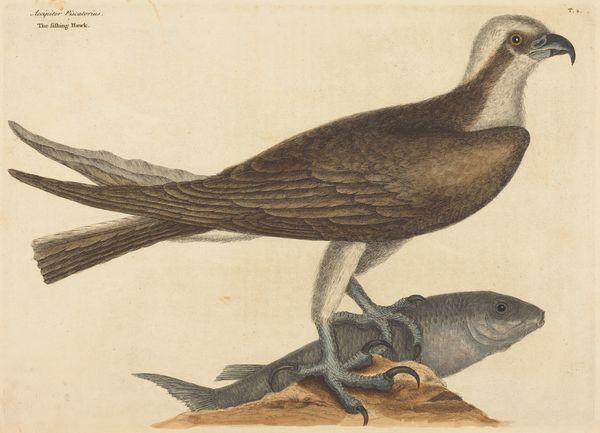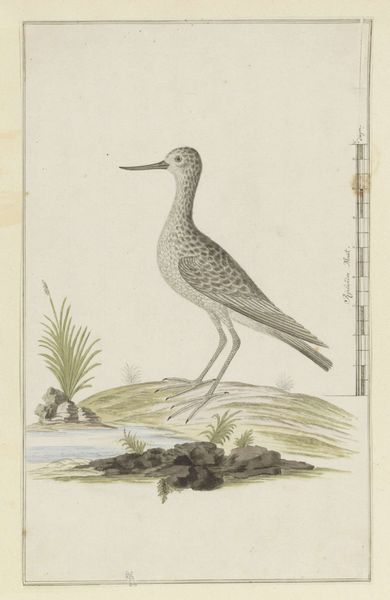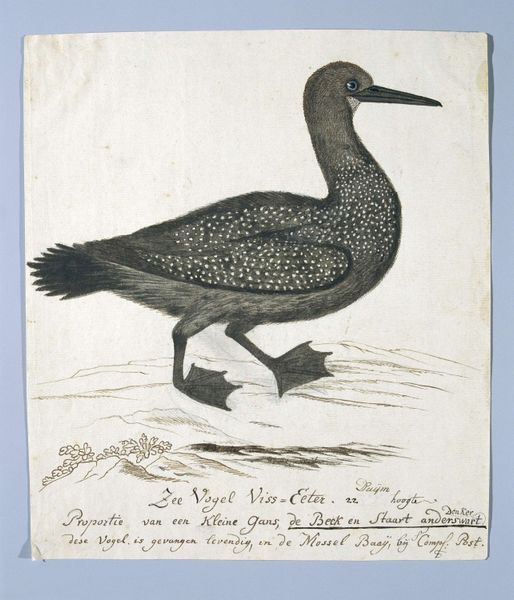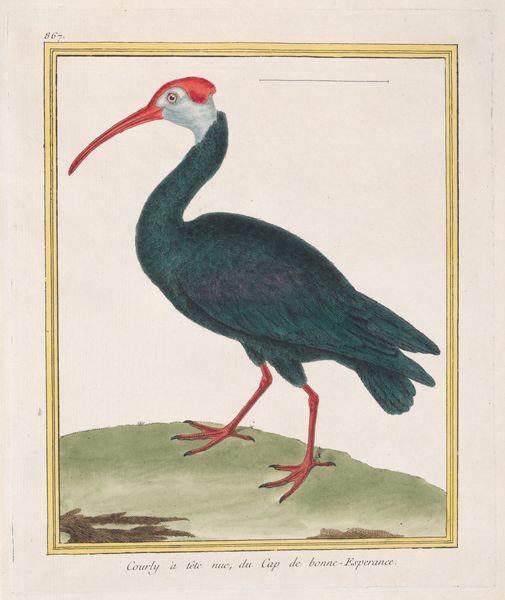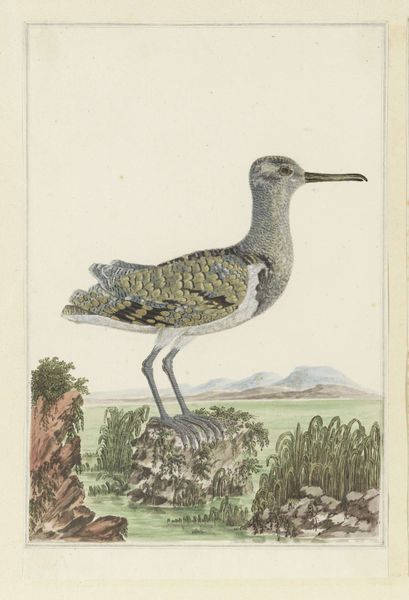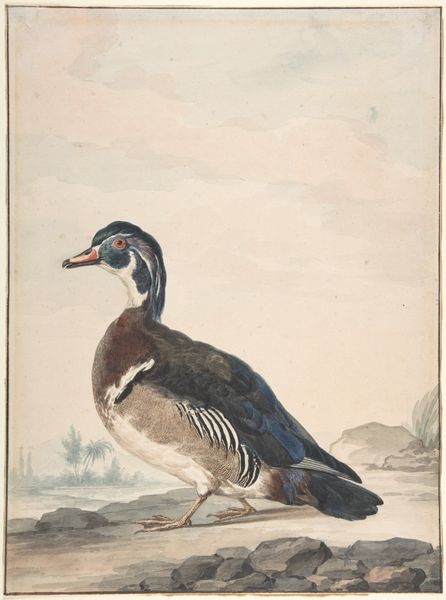
The Blue Winged Shoveler (Anas clypeata foemina) Possibly 1731 - 1743
0:00
0:00
drawing, coloured-pencil, print
#
portrait
#
drawing
#
coloured-pencil
# print
#
caricature
#
coloured pencil
#
watercolour illustration
#
naturalism
Dimensions: plate: 34.9 x 26 cm (13 3/4 x 10 1/4 in.) sheet: 51.4 x 37.1 cm (20 1/4 x 14 5/8 in.)
Copyright: National Gallery of Art: CC0 1.0
Editor: So, here we have Mark Catesby's "The Blue Winged Shoveler," a colored pencil and print from around the 1730s. It feels very… deliberate, like a scientific study, but that bill is quite something! What jumps out at you when you look at it? Curator: The bill is absolutely the key, isn’t it? Consider the shoveler's bill not just as a biological tool, but as a symbol. Think about what shoveling implies: moving earth, uncovering, sifting. Catesby is showing us not just a duck, but a creature uniquely adapted to its environment. It speaks to resourcefulness, doesn't it? And doesn't the almost comical exaggeration invite a second look, perhaps even a deeper consideration of our own relationship with the natural world? Editor: Resourcefulness… I hadn't thought about it that way. It felt almost like a caricature at first glance, but I see your point. Do you think Catesby intended that symbolic reading, or is that something we're projecting onto it now? Curator: I think the symbolic weight of an image accrues over time, layered by subsequent viewers and cultural shifts. Catesby was likely focused on documenting natural history, yes, but the image he created inevitably taps into broader themes of adaptation, survival, and even the grotesque beauty of nature. He presented nature, but how are we framing this presentation? How does its meaning change when moved from a scientific record into a gallery? Editor: So, it's like the image holds both his intention and our interpretations, coexisting. Fascinating. Curator: Exactly. The symbol persists; its interpretation evolves, informed by psychology, anthropology, history. Now, doesn't the bird look a little different now than it did initially? Editor: Definitely. I'm now seeing it as a record of a relationship - Catesby observing the bird, and us observing Catesby's observation. That's really neat. Curator: Precisely. We uncover not just the image of the duck, but the images we hold, through history and memory.
Comments
No comments
Be the first to comment and join the conversation on the ultimate creative platform.

